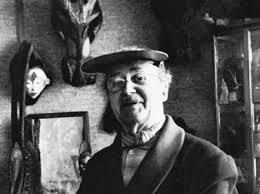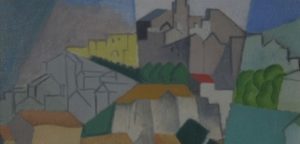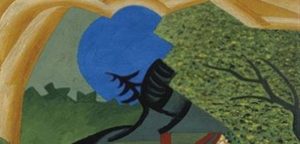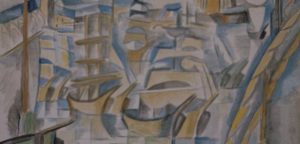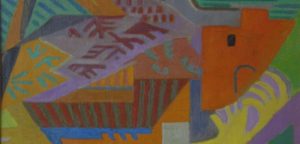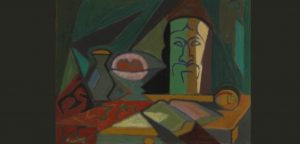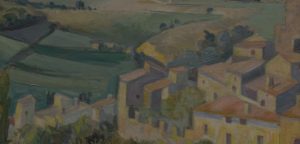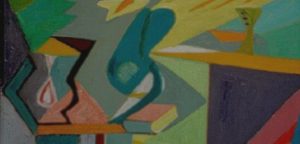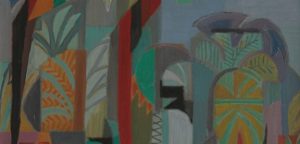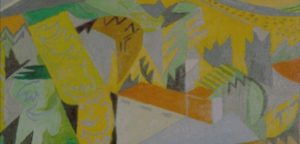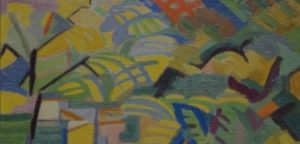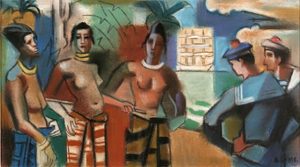Andre Lhote was born on the 5th of July in 1885 in Bordeaux, France.
1885 - 1962
Andre Lhote
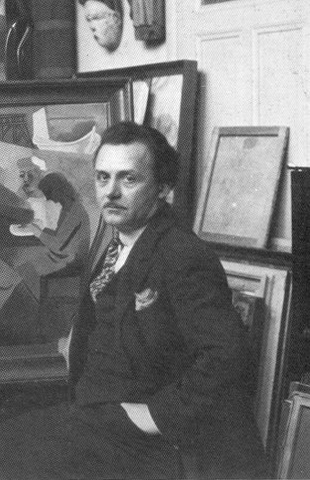
description
A French artist and sculptor, participant of the Cubists’ Union “Golden Section”.
Born into a poor family. After receiving the certificate of secondary education, Andre became a student at a furniture workshop where he mastered the skills of decorative wood carving. Since 1899, he attended decorative art courses at the School of Fine Arts in Bordeaux and worked as a woodcarver.
André Lhote was one of the most intelligent and universal artists of the early 20th century. A follower of Cubism and Fauvism in painting and a talented sculptor, he is also known as an influential art critic and teacher, a founder of a private art school in Paris and in Rio de Janeiro. The theoretical ideas of the artist enjoyed great popularity among contemporaries; he lectured to a wide audience throughout France, as well as in Belgium, England, Italy, Egypt and Brazil. In 1955, the artist received the National Award for Contribution to the Development of Modern Painting and became a President of the International Association of Artists, Engravers and Sculptors. Numerous international exhibitions were held throughout his life, including a large retrospective exhibition of works by André Lhote in the Paris Museum of Modern Art in 1957.
Key ideas:
– The individual manner of the artist is characterized by high decorative, original plane solutions and perspectives. In the first half of his career, the main interest of André Lhote was Cubism, a style in which he reached the heights of skill and expressiveness.
– Landscapes, still lifes and portraits of the artist are marked by carefully verified composition, complex systems of interacting planes and geometric shapes. At the same time, most of the works are made in an intensely saturated color scheme, using bright green, orange and yellow shades.
– The artist’s works differ in their manner from the works of his colleagues and fellow Cubists. They are less inclined to abstraction, and are rather oriented to depicting real objects in their complex interaction with each other and the surrounding space, rather than studying the internal construction of things.
– Despite the extremely bright palette and fragmentary vision of Cubism, Andre Lhote’s paintings are distinguished by calmness and a special rhythm that creates a sense of stability and some academicity, if one can so express the avant-garde trends in which the author worked.
– The central themes of the paintings by André Lot were a human being and a natural element. He painted a large number of urban and rural species, scenes from the metropolitan life, as well as nudity. Many canvases are dedicated to the life of seamen and boiling work in the port. The artist created a whole series dedicated to the life of the port of his hometown Bordeaux, which he had been creating from 1911 to 1915.
– In the second half of his career, Lot actively engaged in art education, opened his own school in Paris and in Rio de Janeiro, traveled with lectures around the world. Among his pupils, there were Irish artists, including Evi Hon and Nora McGuinness, as well as great painter-decorator Tamara de Lempicka.
1885
1905
1909
1912
1914
1919 - 1924
1925
1930
1947
1951
1961
1962
The birth of the artist
The artist moved to Paris
Left the profession of a woodcarver and his native city to devote himself to painting. The artist moved to Paris, where he immediately fell into the whirlpool of artistic trends and styles. He got acquainted with the works of Gauguin and Cezanne, felt the influence of Fauvism. After a brief army service in 1906, Lhote rented a studio and first exhibited his work at the Salon of Independent. The following year the artist took part in the annual Autumn Salon.
Married Margaret Hayat
Married Margaret Hayat and settled in Paris. In the following year, the first personal exhibition of the artist was held at the Drouet Gallery. By that time, he had already moved to analytical Cubism, combining this style with the Fauvist palette and the Post-impressionist vision of the composition.
There was a final switchover to Cubism
There was a final switchover to Cubism, when the artist joined the group of abstract artists “Gold Section” and took part in their joint exhibition at the gallery La Boezi. In the same year, at the invitation of art critic Roger Fry, Lhote took part in the Second Impressionist Exhibition at the Grafton Gallery in London.
A personal exhibition of the artist was held at the Wildruck Gallery
A personal exhibition of the artist was held at the Wildruck Gallery. In the autumn of the same year, Andre Lhote was mobilized in connection with the outbreak of the First World War. The following year, the artist was released from military duty for health reasons and returned to the work. Over the next several years, he took part in various exhibitions, wrote art criticism articles and began teaching at the Atelier Libre on the Boulevard Montparnasse.
“New French Review”
Started cooperation with the magazine “New French Review”, wrote articles and essays on art, as well as scientific treatises on painting. He taught at various schools: Atelier Libre and at the Notre-Dame-de-Champ Academy, at the Academy on Raspail-240 Boulevard and the Anderson Academy. Participated in several exhibitions: at the gallery of P. Rosenberg, in the gallery Drouet, and also became one of the organizers of the exhibition “One Hundred Years of French Painting” in favor of the reconstruction of the Strasbourg Museum.
He opened his own academy in Paris
He opened his own academy in Paris, which had a great influence on the new generation of artists. Many students from other educational institutions where he taught were transferred to him. The student body was international, Irish, Russians, Americans, some French and English attended painting and graphic lessons at the academy. Many students were from Scandinavian countries. In the same year, the artist, with the help of his pupils and friends, restored a large estate in Mirmande, which was always open to young and talented artists.
Andre Lhote traveled a lot
A period of great activity in the artist’s career. André Lhote traveled a lot. He visited Tunisia and the countries of Eastern Europe where he gave lectures on art and participated in various conferences. In addition, the artist illustrated several books and poetic miscellanies. In 1937, Lhote worked on decorating the Palace of Discoveries at the World Exhibition in Paris.
“The influence of Cezanne”
After the end of the Second World War, he returned to the active social life, organized the exhibition “The influence of Cezanne” at the Gallery of France, which featured works of all the important masters of the 20th century, wrote several critical articles, lectured at Sorbonne in the winter of 1948-49.
Traveled to Egypt to study the painting of the pharaohs
Traveled to Egypt to study the painting of the pharaohs. In the summer of 1952, he visited Brazil at the invitation of his Brazil fellow artists. In Rio de Janeiro, he opened an art academy. The following year, the exhibition “Cubism” took place at the National Museum of Modern Art, where Lot presented twelve of his paintings.
The last lifetime personal exhibition of the artist was held in Paris
The last lifetime personal exhibition of the artist was held in Paris.
The death
The artist died on the 25th of January in 1962 in Paris, France.

